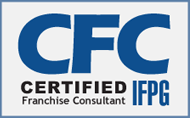Home Care Advertising Gets Edgy, Agile...
To stand out in a crowded and competitive marketplace, some home care franchise companies are updating their advertising strategies. They are embracing technology for more data-driven campaigns, and they are taking calculated risks with content—with one ad even telling the story of a client attending a strip show.
Advertising and sales rep salaries/bonuses are typically the two largest marketing expense categories for home care providers, according to the 2017 Home Care Benchmarking Study from Home Care Pulse. The ad spending is likely to increase in the coming years, according to Scott Osborne, founder and managing principal of Osborne Home Care Group, a merger and acquisitions practice in St. Louis, Missouri. He points to the influx of private equity investors in home care. In particular, these firms are throwing their weight behind the sector’s many franchise companies, helping them grow.
“These well capitalized, nationally branded networks have the financial means to invest in national advertising and top of the page internet marketing,” Osborne wrote in the Benchmarking Report.
Two of these large franchise players, Interim HealthCare and Nurse Next Door, show how consumer advertising is evolving for home care.
Interim HealthCare, with more than 300 locations across the country, offers private duty care, skilled home health, and hospice, and is an example of a private equity-backed franchise company. In 2015, Los Angeles-based Levine Leichtman Capital Partners acquired Interim’s parent company, Caring Brands. In Sept. 2017, Interim hired Lesly Cardec as senior vice president of marketing and public relations. Previously, Cardec handled public relations and marketing for Randstad USA, the largest staffing firm in the world.
Big-picture, there are two advertising trends that Cardec is focused on in her work at Interim. One is leveraging emerging technologies to tell stories.
“There are so many stories I hear, and I think, we need to tell people about that,” Cardec told Home Health Care News. “Rarely do you see brands talking about the why…why people do [home care], and to me, that pulls people in…tech has really given us more options to do that.”
For example, there are platforms that can create a digital flipbook out of images captured over the course of day. Cardec is interested in leveraging these types of tools for ads and other marketing materials, and overall creating “a visual, beautiful story.” One example of visual storytelling: a video describing a couple’s experience with hospice, which was posted on social media and is being used as education for clients and caregivers.
The other trend is also related to technology—namely, the ability to capture more data, in a more timely manner, about how ad campaigns are performing. In the past, it was commonplace to have massive and expensive ad campaigns that might span several months, or longer. That’s changing.
“The better way to go is to work on, say, eight-week cycles, where you’re constantly evaluating and readjusting,” Cardec said. “I don’t see huge spends on massive campaigns as a one-and-done thing as the way of the future. It’s got to be more agile.”
As is common with franchise systems, national brand strategy for Interim flows out of the corporate headquarters in Sunrise, Florida, where Cardec works. However, franchise owners run their locations with a great deal of autonomy, including in setting their advertising budgets and strategies and even creating their own content. The hospice video was made by franchisee Interim HealthCare TX&NM.
So, working with Interim’s ad agency and PR firm partners, Cardec is focused on creating advertising that can be customized for local markets and on empowering owners to create their own advertising as well. She likes small pilot projects as a way to get franchisee feedback and support for new tools and campaigns.
“At the end of the day, we’re here to support [the franchisees], so there are different campaigns and material that we develop and they leverage, but no one knows the local market better than them,” she said.
Nurse Next Door is another large and growing home care franchisor that believes in a storytelling approach in its advertising—and it has grabbed attention for its edgy content.
Based in Vancouver, British Columbia, the company has more than 80 locations in the United States and about 70 in Canada. Started in 2001 and franchising since 2007, the company is still owned by co-founders John DeHart and Ken Sim, and its president is Cathy Thorpe.
“Nurse Next Door has always taken the approach of being disruptive,” Thorpe told HHCN. “We do a lot of storytelling…and we’re not afraid to be bold. We want to be provocative.”
Take a 2017 ad that told the story of “Miss Daisy,” a client who attended the strip show “Thunder From Down Under” with her Nurse Next Door caregiver.
Or how about a radio spot in which Thorpe herself bluntly addresses seniors and pulls no punches in taking on the retirement home industry.
“No one wants to live in a retirement facility, no one. Especially not you, am I right?” Thorpe says in the ad. “When your kids start talking about how wonderful it is to live in a retirement home, have them go to NurseNextDoor.com.”






